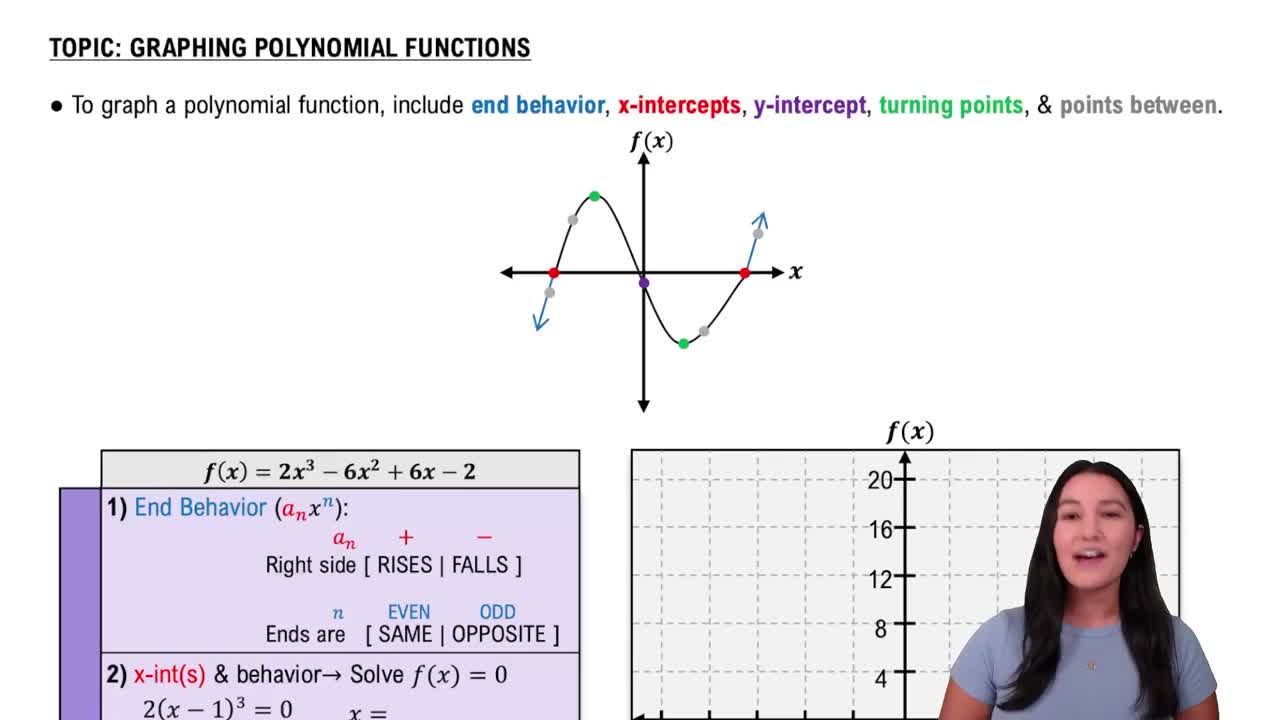Here are the essential concepts you must grasp in order to answer the question correctly.
Polynomial Functions
A polynomial function is a mathematical expression involving a sum of powers in one or more variables multiplied by coefficients. The general form is f(x) = a_n*x^n + a_(n-1)*x^(n-1) + ... + a_1*x + a_0, where 'n' is a non-negative integer and 'a_n' is not zero. Understanding the structure of polynomial functions is essential for analyzing their behavior, including finding zeros and graphing.
Recommended video:
Introduction to Polynomial Functions
Finding Zeros
The zeros of a polynomial function are the values of 'x' for which f(x) = 0. These points are crucial as they indicate where the graph intersects the x-axis. To find the zeros, one can use methods such as factoring, the Rational Root Theorem, or synthetic division, depending on the degree and complexity of the polynomial.
Recommended video:
Finding Zeros & Their Multiplicity
Graphing Polynomial Functions
Graphing polynomial functions involves plotting points based on the function's values and understanding its general shape, which is influenced by the degree and leading coefficient. Key features to consider include intercepts, end behavior, and turning points. A complete graph can be sketched by identifying zeros, evaluating the function at various points, and analyzing the intervals of increase and decrease.
Recommended video:
Graphing Polynomial Functions
 Verified step by step guidance
Verified step by step guidance Verified video answer for a similar problem:
Verified video answer for a similar problem:

